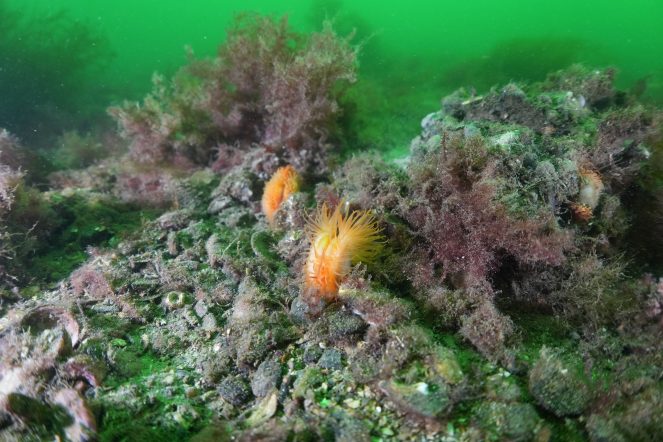Cover photo by Mark Woombs
This week, the Scottish Government announced the proposed management measures for inshore Priority Marine Feature (PMF) sites which are not covered by the inshore Marine Protected Area (MPA) network.
Some of the areas covered are in CCN members’ local waters, such as West Loch, Loch Hourn and Eigg.
This is as part of a phased rollout of inshore fisheries management measures, with the proposed management measures for inshore Marine Protected Area (MPA) sites to be released in coming months. Further protection from harmful fishing practices will be proposed through proposed management measures for inshore MPAs. After many years of waiting, these measures will be consulted on this November, alongside fisheries management measures for inshore MPAs.

Flame shell bed, © NatureScot
What measures are being proposed?
The proposed measures are to prohibit bottom-towed mobile fishing gear in the identified areas, which contain PMFs but are not currently included in MPAs. Bottom towed fishing gear is defined as fishing gear that makes contact with the seabed, and most typically refers to trawlers and scallop dredgers.
Two options for management are proposed, with the difference between the two being the size of area the measures cover. In some sites, there is a sizable difference between the areas covered under both options, in others there is little or no difference.
Maps of both of these options can be seen here:
What are Priority Marine Features?
Priority Marine Features (PMFs) are features, including a variety habitats and species, of the marine environment deemed to be of particular importance to biodiversity and cultural heritage.
These proposed measures cover the 11 PMFs deemed to be most at risk from bottom-contact fishing gear; blue mussel beds, cold water coral reefs, fan mussel aggregations, flame shell beds, horse mussel beds, maerl beds, maerl or coarse shell gravel with burrowing sea cucumbers, native oysters, northern sea fan and sponge communities, seagrass beds, and serpulid aggregations. In total though, there are 81 designated PMFs in Scotland.
Why is this needed?
Bottom-contact fishing methods like scallop dredging and bottom trawling are some of the most destructive practices used in European waters, causing widespread damage to the seabed and threatening key marine habitats. Scientific studies show that trawling not only harms biodiversity and nursery grounds but also releases large amounts of carbon and contributes significantly to climate change. Recovery from such damage can take years.
Despite their importance to biodiversity and coastal communities, Scotland’s seas are in bad shape. Fish stocks have declined sharply over the past century, despite an increase in fishing effort. Sustainable, low-impact fisheries offer a viable path forward, supporting communities while protecting nature. Prioritising these practices could help restore marine health and build resilience for the future.
What happens next?
In July 2014, MPAs were officially designated under the Marine (Scotland) Act 2010 and the UK Marine and Coastal Access Act 2009. Today, the Scottish MPA network spans more than 200 sites, though few of these areas are protected from harmful forms of fishing.
That same year, Scottish Ministers identified PMFs, the species and habitats most vital to the health of our seas. In 2017 efforts began to explore how best to manage and protect these features.
Now, we’re entering a pivotal moment for marine conservation. In November, the Scottish Government will launch a public consultation, asking you for your thoughts on how to manage PMFs and inshore MPAs. After years of anticipation, we have a real opportunity to put meaningful protections in place to help protect and restore Scotland’s marine ecosystems.